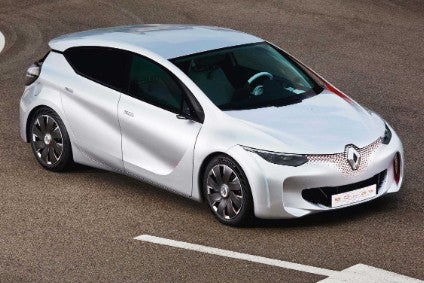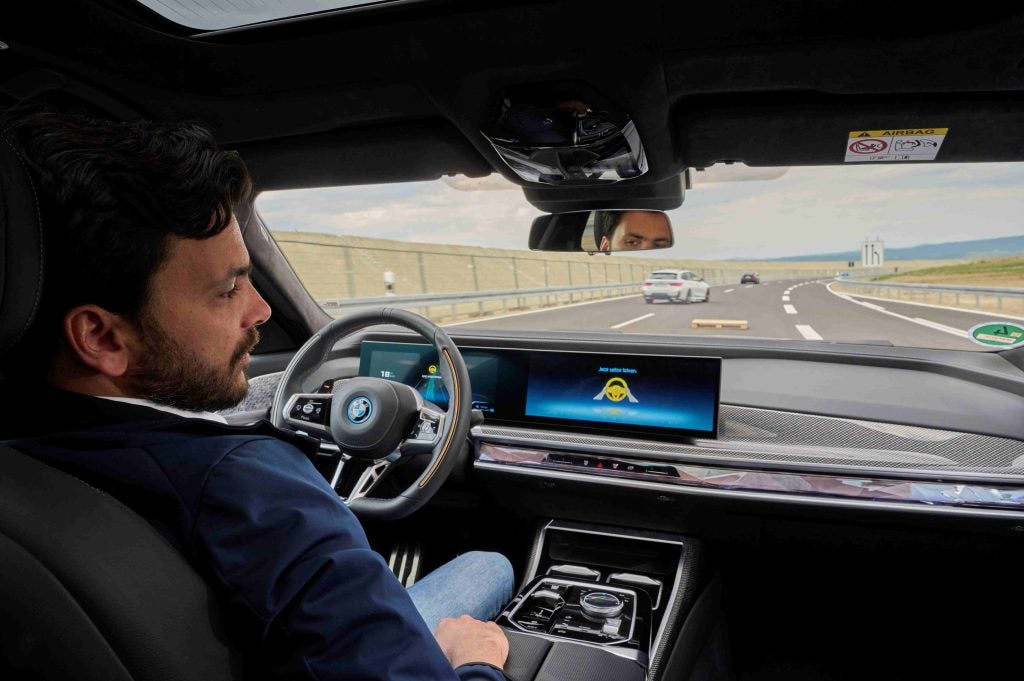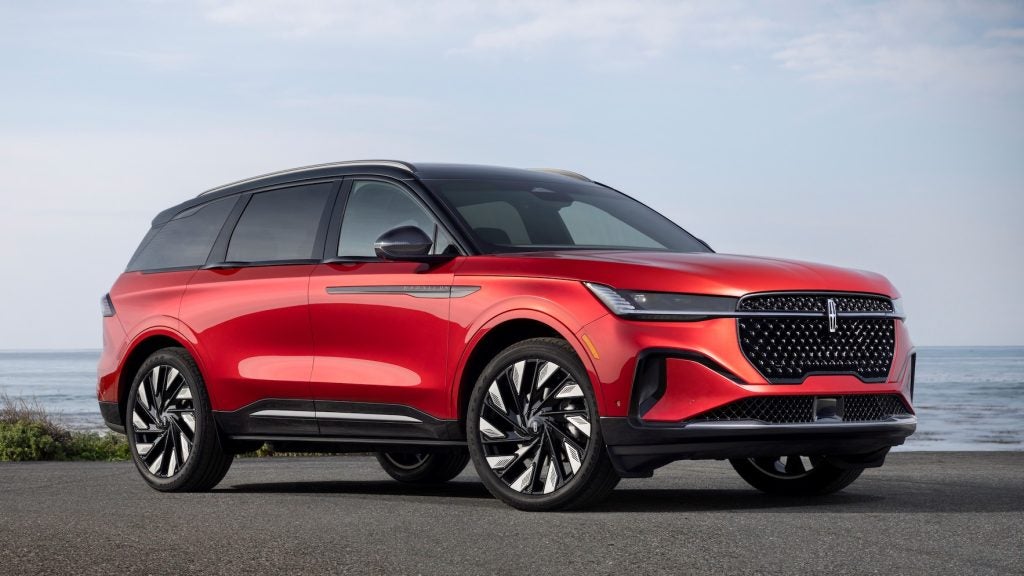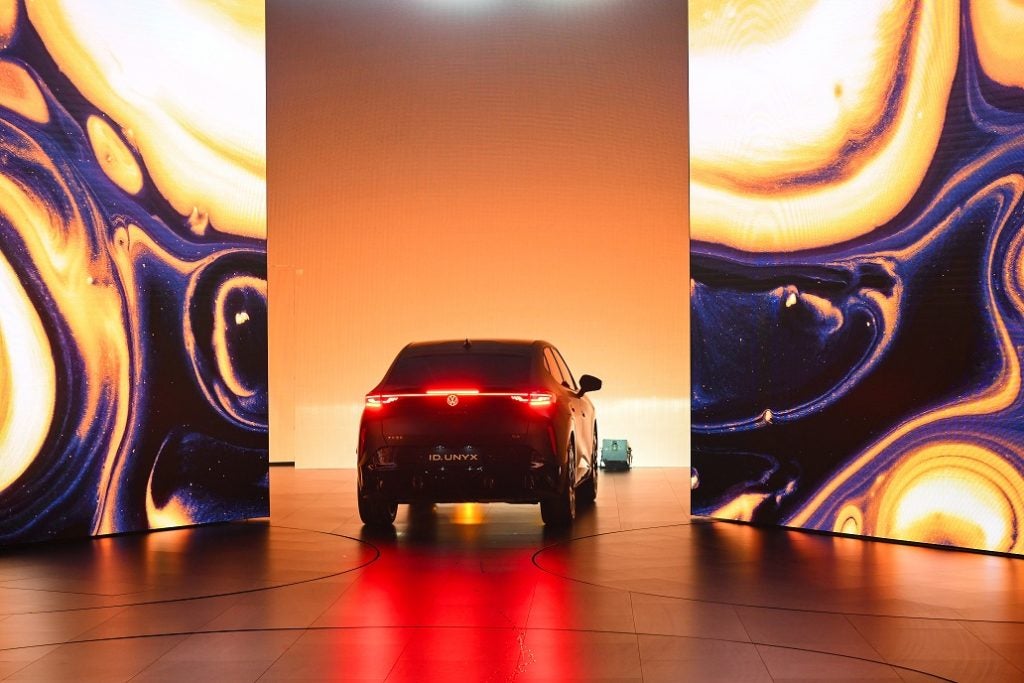
This first of a multi-part analysis for Groupe Renault and Nissan Motor brands examines Renault’s major current and future models as well as looking at Alpine.
A segment
Aside from the Twizy and Zoe electric vehicles (see EVs section below), there are two models in the smallest size class.
The third generation Twingo, a rear-engined five-door hatchback, is part of a JV with Daimler. This centres on not just a bespoke rear-engined, rear-wheel drive platform, but joint production at a Groupe Renault plant in Slovenia.
Build of the Twingo and the smart forfour which also uses the partners’ Edison architecture, takes place at the Revos factory in the city of Novo Mesto. The smart fortwo, which is built at the smartville plant in France, also uses this platform. There is no Renault version of the two-seater, nor is there an equivalent of the plug-in forfour.
The Twingo was launched with the choice of normally aspirated or turbocharged three-cylinder petrol engines. These are the SCe 70 (70hp/91Nm) and the Energy TCe 90 (898cc 90hp/135Nm). The GT, which was announced to the media in June 2016, went on sale across Europe from the fourth quarter of that year. It is powered by a 110hp version of the 898cc TCe.
How well do you really know your competitors?
Access the most comprehensive Company Profiles on the market, powered by GlobalData. Save hours of research. Gain competitive edge.

Thank you!
Your download email will arrive shortly
Not ready to buy yet? Download a free sample
We are confident about the unique quality of our Company Profiles. However, we want you to make the most beneficial decision for your business, so we offer a free sample that you can download by submitting the below form
By GlobalDataHaving been launched at the 2014 Geneva motor show, the Twingo is overdue for a facelift. This will likely be revealed at the Paris motor show in October.
The fourth generation model should again be part of a JV with Daimler. Both it and the successors for the smart fortwo and smart forfour are expected in 2021.
The Kwid is a low-cost crossover originally only for India but also now locally assembled in Brazil at the Ayrton Senna plant in Curitiba. Renault is said to be looking at building the Kwid in Iran. It has been available in its first market since the second half of 2015 and it was the first production vehicle for the Alliance’s CMF-A platform. The Kwid Climber was added in March 2017.
Cheap touches are easy to see on the Kwid: single wiper, no rear wash/wipe, just three nuts to secure each wheel, and an old-fashioned roof-mounted antenna. The car also lacks ABS and ESP. A driver’s airbag is only standard in the higher-priced model grades.
Renault is planning several more A segment models, each one based on the Kwid.
Renault is planning several more A segment models, each one based on the Kwid. They are a sedan and an MPV for India and for the Chinese market at least, an EV (see below).
B segment/Sub-compact
The latest Clio/Lutécia – the latter has always been the model name in Japan – is Renault’s main model in the global B segment. It is built in France at Flins and Dieppe, at Bursa in Turkey by OYAK-Renault and at Revoz in Slovenia.
BJA is the code for the next model. The fifth generation Clio is set to enter production from the first quarter of 2019. It will use the Alliance’s CMF-B architecture. The EOLAB, a lightweight concept from the 2014 Paris motor show, will have given some clues about the technology which could be employed, as well as the styling. This includes what Renault calls its future ‘Z.E. Hybrid’ powertrain. EOLAB was the first vehicle to use the Renault-Nissan Alliance’s CMF-B architecture. The Nissan Micra was the first production model to be based on CMF-B.
C segment/Compact
The fourth generation Mégane five-door hatchback (project code: BFB) entered production at its first plant, Palencia (Spain) in November 2015. KFB, the wagon/Sport Tourer (‘Estate’ in France and many other markets) build at the same location followed from June 2016, three months after this body style had its world premiere at the Geneva motor show.
Mégane Grand Coupé (project code: LFF) is the name for the four-door sedan, the replacement for the Fluence. This derivative was announced to the media in July 2016, with production at Bursa in Turkey following three months later. The Grand Coupé is sold in the following countries: Algeria, Australia, Bulgaria, Croatia, Czech Republic, Egypt, Estonia, Hungary, Ireland, Israel, Italy, Latvia, Lebanon, Lithuania, Morocco, Poland, Romania, Saudi Arabia, Serbia, Slovenia, Tunisia, Turkey, Ukraine and the United Arab Emirates.
Facelifts for the range should take place in 2019 and a next generation model series will then be rolled out from October 2022. This will use an update of CMF-C/D.
D segment/Mid-size
Compared to the market leading Volkswagen Group, Renault has only a small presence in Europe’s D sedan and estate segment. That seems to suit the French company as it has instead been successfully pursuing sales from similarly sized SUVs.
The 4.85m long Talisman is Renault’s replacement for the Laguna and Latitude/Safrane. It was revealed to the media as a sedan in July 2015. The public debut, and the debut of the wagon, ‘Talisman Estate’, was two months later at the Frankfurt IAA.
All Renault-badged cars are built in France at Georges Besse (Douai). The Laguna was manufactured at Sandouville but this facility was retooled to produce light commercials. The Talisman is also manufactured in South Korea but this is a slightly restyled variant, the Samsung SM6. That car is far more successful than the Talisman.
The future Talisman should be in dealerships from the third quarter of 2022.
A facelifted Talisman is due on sale across Europe from late 2018, and the future Talisman should be in dealerships from the third quarter of 2022. It will most likely be based on CMF-C/D. Without a next generation Samsung SM6, the company simply could not make a business case for a replacement model series.
Crossovers and SUVs
J87, the Captur crossover, is Clio-based and had its global debut at the Geneva motor show in March 2013. It is sold mostly in European markets as a rival for the Peugeot 2008 and Opel/Vauxhall Mokka X. Build at Valladolid in Spain commenced immediately after the show.
The Captur sits in the Renault small crossover model range above the Sandero Stepway and below the Koleos. It is also the effective replacement for the Modus and Grand Modus. Renault Samsung Motors (RSM) also sells a Samsung-badged version of the Captur.
A second B segment SUV for Renault’s Valladolid plant in Spain is due to be produced there in 2019. Details of the model in question are not yet known.
HJB is the code for the second generation Captur due for release in Europe during the first quarter of 2020. The next Captur is again expected to be manufactured in Spain (Valladolid) and Brazil (Ayrton Senna plant, São José dos Pinhais) but it might also be built at the DRAC plant in China.
HHA is the model code for the Kaptur. This 4,333m long SUV is built and sold mainly in Russia, India and Brazil. Announced by Renault in March 2016, the Kaptur is based on the same platform as the Renault Duster and Oroch. Renault’s Moscow plant was the first to build it. Production commenced in July 2016.
The Kaptur is not related to the Captur built in Europe, even though it has been styled to look like that model. The major difference, apart from size – the Kaptur is longer – is that the Captur is on a newer architecture, Alliance A. Confusingly, India and Brazil’s models are sold as the Captur. Like the Kaptur, these are based on the B0 platform.
A slide in Renault’s 2017 Drive The Future presentation noted a ‘new body type C-SUV’.
A slide in Renault’s 2017 Drive The Future presentation displayed an outline of what was called a ‘new body type C-SUV’ for Russia, China, Brazil and South Korea which will be linked to the Duster. No release date or any other details were given. The model may appear in 2020, sources now say.
One size up from the B segment Captur and B-C class Kaptur is the Kadjar. Developed with the project code of HFE, this SUV is a rebodying of the Nissan X-Trail, so it uses the Alliance’s CMF-C/D architecture.
The Kadjar had its world premiere at the Geneva motor show in March 2015 with production at Vallamuriel de Cerratos (Palencia) near Madrid commencing the following month.
This was the first Renault to be built by DRAC, the Dongfeng Renault joint venture in the city of Wuhan. The partners had been planning an initial annual build of 75,000 units of the Kadjar, to be followed by a similar target number for the second generation Koleos.
The Kadjar entered production in January 2016, with the larger Koleos added to the line at the greenfield plant during the final quarter of 2016.
China’s Kadjar went on sale in March 2016 with the choice of 1.2- and 2.0-litre turbocharged petrol engines. Compared to Europe’s model, it also comes with a panoramic roof and a different rear suspension system. The 2.0-litre engine is locally manufactured.
The Kadjar may yet be either exported to South Korea or built at RSM’s Busan plant and sold in the country as the Samsung QM5, supplementing the QM3 (Captur) and QM6 (Koleos).
The second generation Kadjar is scheduled to appear in 2022.
A facelift is due for 2019 with a second generation model scheduled to appear in 2022.
The second generation Koleos is a 4.7m long Kadjar-based SUV for China and other markets. It is manufactured by RSM in South Korea, and also in China by DRAC. The current model, which is a size larger than the first generation, entered production at the Dongfeng Renault plant in the city of Wuhan during the final quarter of 2016. This is the same factory which manufactures the closely related but smaller Kadjar. Production at Busan, meanwhile, commenced in July 2016. The model for the South Korean market, the Samsung QM6, has different badges but is more or less identical to the Renault Koleos.
RSM is the production source for all markets with the exception of China. Renault’s Korean subsidiary began exporting the model to markets in Europe, the Middle East and South America commencing in March 2017.
A facelifted Koleos is due in the second quarter of 2020. The third generation should be launched in 2023.
Pick-ups
The 4.7m long Duster Oroch is the smaller and older of two pick-ups. It has been sold mainly in Brazil since October 2015 and is manufactured at the Ayrton Senna/São José dos Pinhais plant in the city of Curitiba. A facelift should be the next news and that’s due out in 2019. This being the last model to be launched on Groupe Renault’s B-Zero platform, there is however a strong chance of the second generation vehicle appearing in 2020, based on the Alliance’s latest CMF-B architecture.
The Alaskan, formerly project ZU60, is larger than than the Duster Oroch and is by contrast a global vehicle. Production will eventually take place at multiple plants, with the first one, Nissan’s Cuernavaca factory in Mexico, having started building the model in December 2016. The Alaskan doesn’t differ from the Nissan NP300/Navara original quite as much as the Mercedes-Benz X-Class does.
Barcelona will produce about 120,000 vehicles annually for the three partners, while the Cordoba plant in Argentina will produce nearly 70,000 vehicles a year. A high parts localisation rate is expected to expand the supply bases in Spain and Argentina significantly.
Expect a facelift for the Alaskan in 2020 and a second generation model in 2024.
Monospaces/MPVs/Minivans
RBC is the development code for a small minivan based on the Kwid.
RBC is the development code for a small minivan based on the Kwid. It should be built only in India and use the Alliance’s CMF-A platform as its basis.
While some OEMs such as Mazda and others have taken the decision to withdraw from all or some MPV size segments, Renault believes there is still good potential business for its ‘monospace’ models. The latest Scénic (project code: JFA) and Grand Scénic (RFA) are a case in point.
The fourth generation Scénic had its public debut at the Geneva motor show in March 2016. The Grand Scénic was revealed six months later at the Paris motor show. Deliveries commenced in the fourth quarter of 2016.
Given how new the Scénic and Grand Scénic are, there won’t be any exterior update until 2020, with the fifth generation models due in the third quarter of 2023. These should be based on an evolution of the Alliance’s CMF-C/D architecture.
It isn’t a big seller and there is no RHD build but the E segment Espace (project code: JFC) nonetheless does worthwhile volume. The production model was revealed at October 2014’s Paris motor show. It uses the same C/D version of the Renault-Nissan Alliance’s Common Module Family architecture. Initial production commenced at the Douai plant in late 2014.
The Espace’s mid-life freshening is due in the first quarter of 2019, although it may be previewed at the Paris show in October. The successor model, if there is one, should appear four years later.
EVs
Strictly speaking, the Twizy is not a passenger car, but a quadricycle. Nevertheless, as it is marketed in many countries through Renault’s usual dealer channels, it appears in this report. After having been shown as a concept in 2009, the little one or two-seater electric runabout went on sale in France during December 2011, followed shortly afterwards by other European markets.
The Twizy’s replacement should arrive towards the end of 2019.
No further changes are expected. It replacement should arrive towards the end of 2019.
Plans for an electric five-door hatchback in the A segment were revealed in a slide of Renault’s Drive The Future presentation in November 2017: an image of a Kwid with a cord and a Chinese flag was shown.
The Kwid Z.E. will be manufactured by DRAC, a joint venture with Dongfeng. The little car will likely have a short life cycle as the basic model dates to 2015 and so is due to be replaced (in the Indian market at least) during 2022. More details of these vehicles can be found in PLDB (see the end of this report).
Having spent many billions of euro on electric vehicles, Renault presently has only the Zoe B segment hatchback to show for this in its passenger vehicle range. Effectively a plug-in Clio with a unique body and interior, the Zoe has been with us since early 2013.
Renault quoted the original car’s power output as 65kW with maximum torque of 220Nm. A new motor called R240 debuted at the 2015 Geneva motor show. This gave the car a longer range of 240km or 149 miles. Zoe motors are manufactured at the Cléon powerplant facility in France.
The 50,000th Zoe was built in April 2016. Five months later a car with an NEDC range of 400km (250 miles) was announced, premiering at the Paris motor show. In real-world driving, Renault estimates the car’s (41kWh) Z.E. 40 battery has a range of 186 miles (300km) in urban or suburban areas. The Zoe with the 22kWh battery remains on sale. This has an NEDC rating of 240km (149 miles) or 170km (106 miles) according to Renault’s ‘real world’ rating. The additional variants went on sale across Europe from December 2016.
What Renault calls the 2018 Zoe was announced in February 2018 which was a few weeks ahead of its public debut at the Geneva motor show. There were only minor changes (e.g. new paint options) with the main news being R110. This is a 80kW (110hp) motor. It is 12kW (16hp) more powerful than the R90. The benefit is better acceleration and Renault makes no claim about extra range.
The introduction of the R110 took the number of variants of the Renault-designed and -produced motors available for the Kangoo Z.E., Master Z.E., Zoe and Daimler’s smart EQ vehicles to five (44kW, 57kW, 60kW, 68kW and 80kW).
A second generation Zoe should be one of the first models for the future CMF-EV architecture.
A second generation Zoe should be one of the first models for the Alliance’s CMF-EV architecture, which will stretch from the B to D segments. It might also be exported to South Korea, or even manufactured there too. There could also be an RS (RenaultSport) version. Meanwhile, Mitsubishi Motors may also have a version of this car, although it would have its own body.
CMF-EV was revealed to the media as part of Renault’s October 2017 presentation of its Drive The Future plan.
Alpine
The A110 is the only model for the revived Alpine brand and so far, at least in Europe, sales have been disappointing, even though the car has garnered rave reviews.
In December 2016, Alpine announced that it would begin taking reservations for its ‘Première Édition’. Production of the limited-edition version would be restricted to 1,955 cars, a reference to the year when Alpine founder Jean Rédélé established the brand.
Buyers in Austria, Belgium, France, Germany, Italy, Japan, Luxemburg, the Netherlands, Poland, Portugal, Spain, Sweden, Switzerland and the United Kingdom were able to reserve the Alpine Première Édition. Deliveries commenced in December 2017, with cars for the UK and Japan following from the first quarter of 2018.
Renault says all 1,955 launch edition cars were “reserved” within five days. ACEA data for 30 markets show 38 cars sold in Q1.
All 1,955 cars were “reserved” within five days of the launch edition being announced, Renault claimed in January. It is not clear where the majority of these went. ACEA data for 30 European countries show that during the first quarter of 2018 just 38 cars were sold, 37 of these being delivered in March.
The A110, which had its world premiere at the 2017 Geneva motor show, has a bespoke aluminium platform, with the same material used for what Renault terms the upper body. The car has a claimed 1,080 kg kerb weight (excluding options). It is 4,178mm long, 1,798mm wide and 1,252mm high. The fuel tank is behind the front axle and the engine in front of the rear axle.
The engine is a 185kW (252PS) 1.8-litre turbo with maximum torque of 320Nm. It is is mated to a Getrag 7-speed wet-clutch DCT gearbox. The 0-100km/h time is said to be 4.5 seconds.
Two new variants were revealed at the 2018 Geneva motor show. These are the A110 Pure and A110 Légende, as well as a GT4 racer. Alpine will likely release various limited editions in 2019 and 2020 ahead of a facelift in 2021. Production should finish in 2024. It is too early to say what form any replacement model might take. Groupe Renault is also said to be delaying a decision over whether or not to develop other Alpine models.
Future model plan reports for other manufacturers can be viewed in the OEM product strategy summaries section of just-auto.com.
Future product program intelligence
More data on vehicle lifetime and future product plans is available in PLDB from QUBE.
The next brand in the R-N-M Alliance series with be Dacia, followed by Renault Samsung, Lada, Nissan, Infiniti and ending with Mitsubishi.






